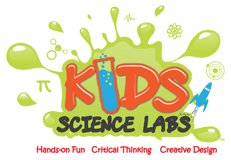Roads need to be smooth, strong, durable, and maintained or else we are going to hear about it as civil engineers. Roads also have to fit pipes, wires, and sewers underneath! During Builder’s Paradise, our innovative students at Kids Science Labs investigated
How to make concrete with various pebble-like textures for added friction
How potholes are created and how to use science to prevent environmental damage to roads
Which materials would be best for building roads, and then customizing our very own yellow brick roads with strawberry infusions so driving is both safe and full of wonderful aromas
When changes in road designs are necessary based on geographic and climate variations that impact safety and our desired driving experiences
Students engaged in problem solving on how to manufacture concrete and to keep each level of the earth flat, when pouring their own custom concrete aggregate. Each child at KSL explored the science in our city layers under the surface, including rocks, soil, clay, and minerals, as well as what happens when concrete (plaster) is poured with varying aggregate materials. This is a two-day experience @ KSL and teachers focused on enhancing confidence through overcoming design mistakes, and problem solving to improve existing designs.
Show the video to your student to learn more or watch it with them to build more confidence in understanding how roads are built in Science in the City!






















